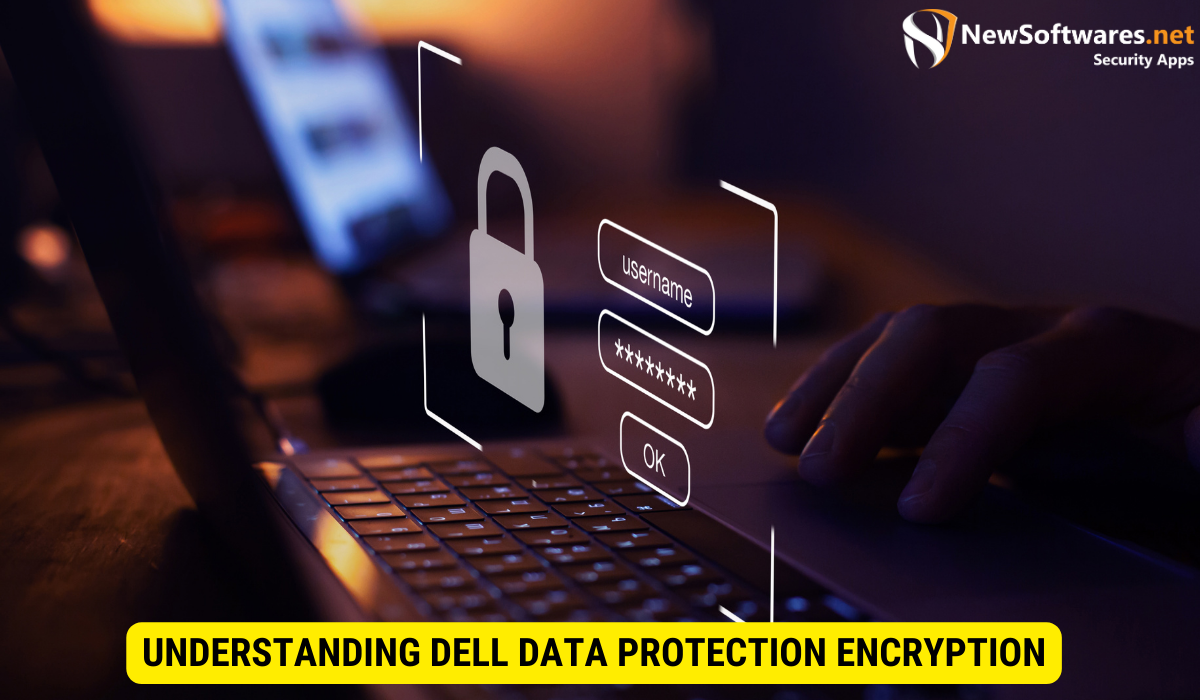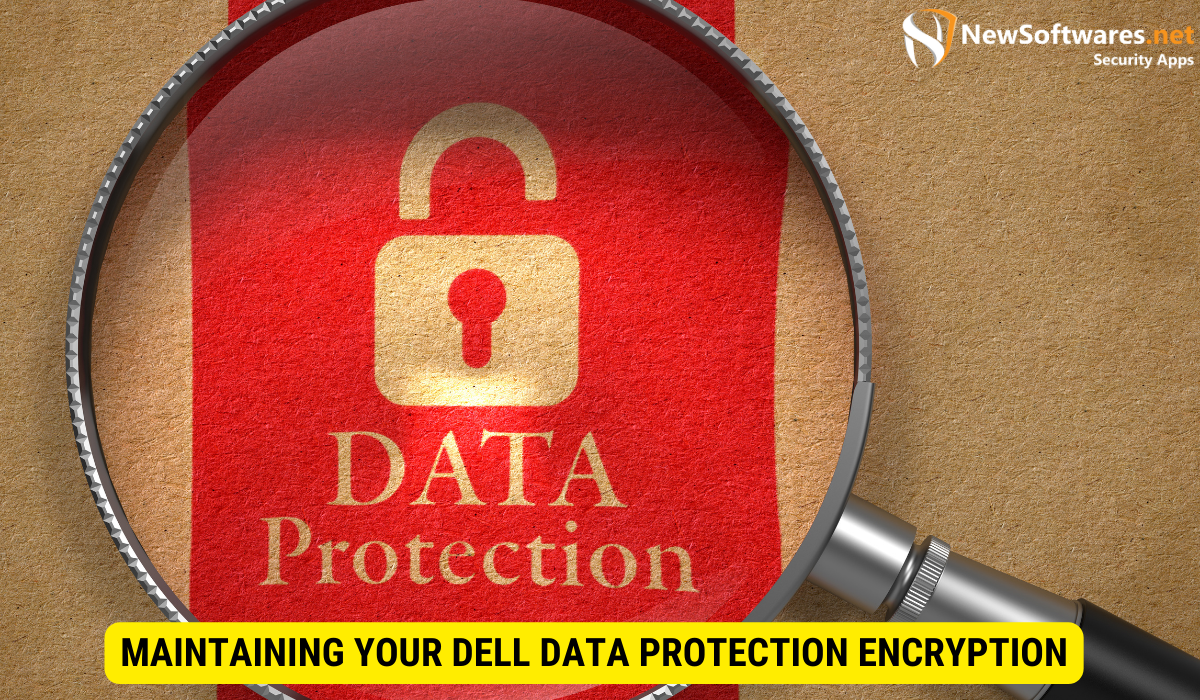Setting up Dell Data Protection Encryption involves the following steps: Understanding its importance, preparing for the setup by checking system requirements, gathering necessary tools and resources, installing the software, configuring settings, activating encryption, and troubleshooting common issues.
Data encryption is a crucial aspect of data security, particularly in today’s digital age, where threats to privacy and data breaches are becoming increasingly prevalent. Dell Data Protection Encryption is a powerful tool that encrypts your data’s safety and confidentiality. In this article, we will guide you through setting up Dell Data Protection Encryption, from understanding its importance to troubleshooting common issues that may arise.
Understanding Dell Data Protection Encryption

Data Encryption is converting plain text into cipher text, which is unreadable without the appropriate decryption key. Dell Data Protection Encryption offers a comprehensive encryption solution for businesses and individuals, protecting sensitive data from unauthorized access and ensuring compliance with various regulations.
The Importance of Data Encryption
With the increase in cyber threats and data breaches, it has become imperative for organizations to implement effective data encryption measures. Encryption helps avoid unauthorized access to sensitive information, even if the data is compromised, ensuring the privacy and integrity of your data.
Data breaches can have unadorned consequences for businesses, including financial loss, damage to reputation, and legal implications. Organizations can mitigate these risks by implementing Dell Data Protection Encryption and safeguarding their valuable data assets.
Furthermore, data encryption is not only crucial for businesses but also for individuals. With the increasing confidence on digital platforms for personal information storage and communication, individuals must take practical steps to protect their sensitive data from prying eyes. Dell Data Protection Encryption provides a user-friendly solution that empowers individuals to secure their personal information and maintain their privacy.
Key Features of Dell Data Protection Encryption
Dell Data Protection Encryption offers a range of features that make it a reliable choice for securing your data. Some key features include:
- Full Disk Encryption: Dell Data Protection Encryption can encrypt the entire hard disk, including the operating system, applications, and user data, providing comprehensive protection.
- File and Folder Encryption: You can selectively encrypt specific files and folders, allowing you to secure sensitive data while maintaining flexibility.
- Centralized Management: Dell Data Protection Encryption offers a centralized management console, enabling administrators to manage encryption policies and monitor compliance.
Full Disk Encryption is a critical feature of Dell Data Protection Encryption. By encrypting the entire hard disk, organizations can ensure that all data stored on the device is protected, regardless of location or format. This feature protects against unauthorized access, even if the device is lost or stolen.
File and Folder Encryption is another essential feature that allows users to selectively encrypt specific files and folders. This flexibility enables organizations to focus their encryption efforts on the most sensitive data, optimizing resource allocation and minimizing the impact on system performance.
The centralized management console provided by Dell Data Protection Encryption simplifies the administration and monitoring of encryption policies. Administrators can easily configure encryption settings, enforce compliance requirements, and track encryption status across the organization. This centralized approach streamlines the management process, reducing the administrative burden and ensuring consistent encryption practices.
Dell Data Protection Encryption also supports integration with existing IT infrastructure, making it relaxed to deploy and manage encryption across multiple devices and platforms. This interoperability ensures a seamless integration with your organization’s security framework, enhancing overall data protection.
In conclusion, Dell Data Protection Encryption offers a comprehensive and user-friendly solution for data encryption. With its key features, such as full disk encryption, file and folder encryption, and centralized management, organizations and individuals can effectively safeguard their sensitive data, mitigate the risks of data breaches, and ensure compliance with regulatory requirements.
Preparing for the Setup
Setting up Dell Data Protection Encryption requires careful preparation to ensure a smooth installation process. Before diving into the setup, ensuring that your system meets all the requirements is crucial. This will help guarantee optimal performance and functionality of the encryption software.
System Requirements
One of the first steps in preparing for the setup is to assess whether your system meets the specified requirements. Dell Data Protection Encryption necessitates a compatible operating system that supports the software’s functionalities. Verifying that your system’s operating system aligns with the supported versions is essential.
Additionally, sufficient processing power is crucial for the encryption software to run efficiently. The system should have a processor that meets or exceeds the minimum requirements specified by Dell. This ensures that the encryption processes do not strain your system’s resources, allowing for smooth operation.
Another critical aspect to consider is the availability of disk space. Dell Data Protection Encryption requires a certain amount of free disk space to accommodate the installation and operation of the software. Reviewing the specified disk space requirements and ensuring that your system has enough available storage is recommended.
Necessary Tools and Resources
Before proceeding with the setup, gathering all the necessary tools and resources is essential. This will help streamline the connection process and minimize any potential interruptions. Ensure that you have the Dell Data Protection Encryption software installer readily available. This installer package contains all the files required to install the encryption software on your system.
In addition to the software installer, you may also need license keys to activate the Dell Data Protection Encryption software. These license keys are typically provided by Dell upon purchase or can be obtained through the appropriate channels. It is crucial to have these license keys ready during the setup process to ensure a successful installation.
Furthermore, having a stable internet connection is recommended during the setup. This allows you to download any necessary updates or additional components required for the encryption software. Staying connected to the internet ensures that you have access to the latest geographies, bug fixes, and security patches, enhancing the overall performance and reliability of the software.
By thoroughly preparing for the Dell Data Protection Encryption setup, you can ensure a seamless installation process. Verifying that your system meets the requirements and has all the required tools and resources will help you set up the encryption software efficiently and effectively.
Step-by-Step Guide to Setting Up Dell Data Protection Encryption
Installing the Software
Installing the software on your system is the first step in setting up Dell Data Protection Encryption. Follow these steps:
- Locate the Dell Data Protection Encryption software installer and double-click on it to initiate the installation process.
- Follow the on-screen commands to complete the installation. Ensure you select the appropriate options and agree to the software license agreement.
- Once the installation is completed, restart your system to finalize the installation process.
Configuring the Settings
After installing the software, you must configure the settings to customize the encryption process according to your requirements. Here’s how:
- Launch the Dell Data Protection Encryption software from the Start menu or desktop shortcut.
- Direct to the settings menu, where you can define encryption policies, specify encryption algorithms, and set user access controls. Take your time to carefully review and configure these settings according to your organization’s security needs.
- Once you have configured the settings, save and apply the changes.
Activating the Encryption
With the software installed and settings configured, it’s time to activate the encryption process:
- Launch the Dell Data Protection Encryption software and navigate to the activation menu.
- Enter the required activation key or token to activate the encryption process.
- Follow any additional prompts or instructions provided by the software to complete the activation process.
Troubleshooting Common Issues
Dealing with Installation Errors
If you encounter any errors during the installation process, there are a few steps you can take to resolve the issue:
- Ensure that your system meets the lowest system requirements for the software.
- Check for any conflicting software or applications that may interfere with installation and temporarily disable or uninstall them.
- If the matter persists, try reinstalling the software using the latest version from the official Dell website.
Solving Configuration Problems
If you face configuration-related issues, follow these troubleshooting steps:
- Double-check that you have correctly configured the encryption policies and access controls in the Dell Data Protection Encryption software.
- Review the software documentation or seek assistance from Dell support to ensure you follow the recommended configuration guidelines.
- If necessary, consult with an IT professional or specialist familiar with Dell Data Protection Encryption to troubleshoot and resolve any configuration issues.
Maintaining Your Dell Data Protection Encryption

Regular Updates and Patches
Keeping your Dell Data Protection Encryption software up to date is essential for maintaining optimal security. Frequently check for updates and patches released by Dell and apply them promptly to ensure that your encryption software is equipped with the latest security enhancements and bug fixes.
Periodic System Checks
Performing periodic system checks is crucial to ensure the ongoing functionality and effectiveness of Dell Data Protection Encryption. Conduct regular audits to verify that encryption policies are properly enforced, monitor system performance, and address any detected vulnerabilities or anomalies to enhance your overall data protection strategy.
Key Takeaways
- Data encryption is essential for protecting sensitive information from unauthorized access and data breaches.
- Dell Data Protection Encryption offers full disk encryption, file and folder encryption, and centralized management as key features.
- Before setting up Dell Data Protection Encryption, ensure your system meets requirements, gather necessary tools, and have an internet connection.
- The setup involves installing the software, configuring settings, and activating encryption.
- Troubleshoot common issues during installation or configuration, and maintain the software with regular updates and system checks.
